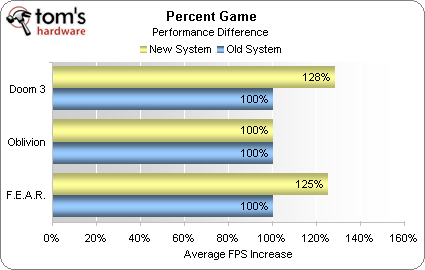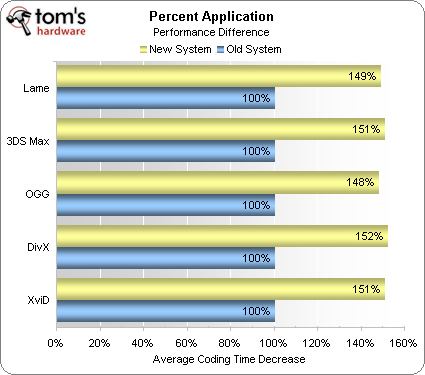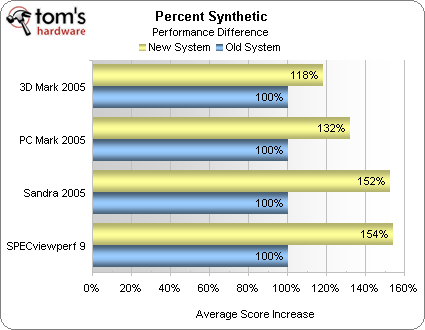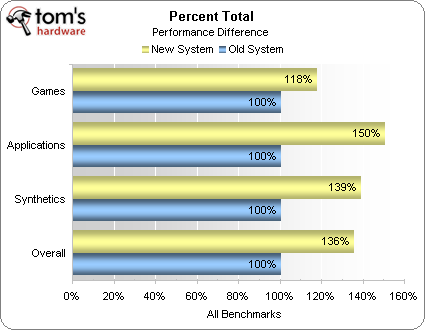SBM 1: Low Cost System
Performance Summary
When we look at the game performance difference, we have to keep in mind that this chart represents an average of game performance at 1600x1200 and below.
It looks like the new e6750/8800 GTS 320 MB combo enjoys an advantage over the e4300/8800 GTX combo, but this isn't really true: at 1600x1200 and above, the 8800 GTX will perform better, even when paired with a slower CPU. This will become more apparent in our summary article, when our e6750/8800 GTS 320 MB goes up against the midrange system, which sports an 8800 GTX.
There's no special interpretation to be made here: the e6750 CPU performs software applications at about one-and-a-half times the speed of the e4300. This is an incredible speed difference, one that really matters in real-world applications.
The synthetic benchmark summary is a little fudged, because we don't have proper results for PcMark 2005 - as we stated, we couldn't get a total system score due to a benchmark glitch. We brought down the new system's average score by assigning it an arbitrary 100% compared to the old system, even though its actual score would likely have been much higher. Even with this artificial handicap, though, the PcMark results were on average 133% faster than the old system.
3dMark 2005 is a synthetic graphics benchmark, and tells pretty much the same story as actual gaming benchmarks did. Looking to Specviewperf and Sisoft Sandra, we see the same 150% performance numbers from the new system that we saw in the application benchmarks.
When we average everything out for a figure to represent the overall performance of the new system vs. the old system, we get a figure of 136%. The interesting part is that the new system costs less than the old one! This will make for an interesting value analysis indeed.
Get Tom's Hardware's best news and in-depth reviews, straight to your inbox.
Don Woligroski was a former senior hardware editor for Tom's Hardware. He has covered a wide range of PC hardware topics, including CPUs, GPUs, system building, and emerging technologies.



